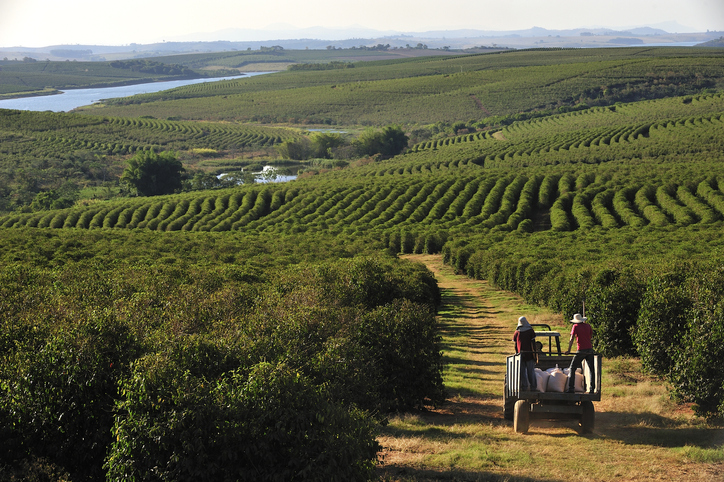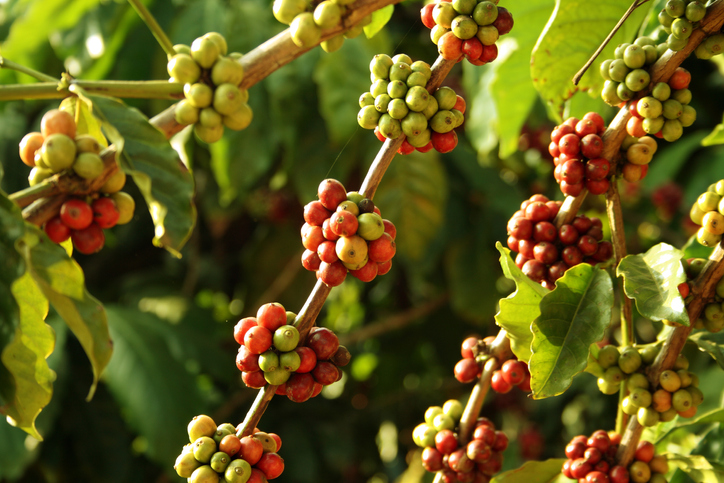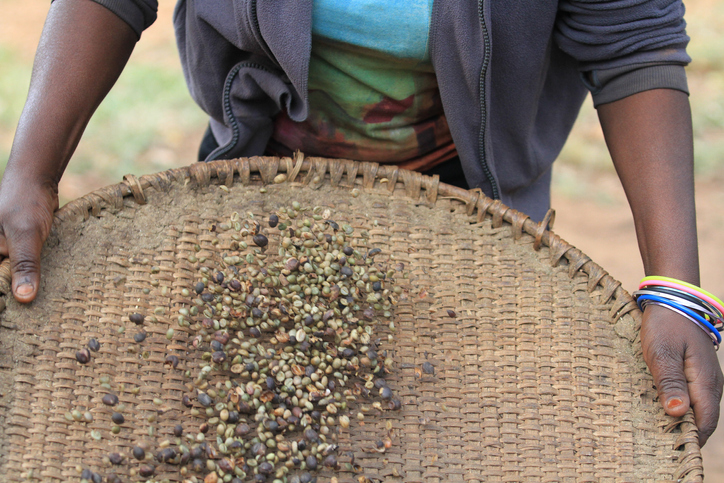Coffee is one of the most traded commodities in the world, second only to oil. According to the International Coffee Organization, 10.4 million tons of coffee is produced annually. Coffee has become one of the world’s favourite beverages since its discovery in Yemen in the 15th century. Today, around 70 countries across the globes are producing coffee, and there are even a few countries such as Ethiopia and Uganda whose economy is heavily dependent on their coffee production.
Now with a ‘cafe’ around every corner and in every city, it comes as no surprise that coffee is the third most consumed beverage in the world, after water and tea. Not just a beverage, coffee beans are also used to provide caffeine (through decaffeination) for other beverages (cola), pharmaceuticals, and cosmetics. Like any crop, even the taste of the coffee may vary due to factors such as social, climatic conditions, altitudes above sea level, and other growing conditions. There are two main types of coffee: Robusta and Arabica. Arabica is a mild coffee and is grown in higher altitudes than Robusta. It is grown in cool and equable temperature, ranging between 150C to 250C, while Robusta is grown in hot and humid climates with temperatures ranging from 200C to 300C. Arabica beans are more aromatic and have higher market value compared to Robusta beans. Now, to help you out in selecting your new travel destination based on different coffee beans, coffee brewing techniques and of course on coffee production, we have compiled a list of the world’s top ten producers of coffee.
Also Read: Famous coffees from around the world you have to try
Here Are The Top Coffee Producing Countries Of The World
1. World’s Largest Coffee Producer: Brazil

Brazil is the top country in coffee production, and this feat isn’t new. The nation has been the highest global producer of coffee beans for over 150 years. Producing a staggering 2.59 million tons, Brazil is responsible for a whopping third of the total coffee production in the world. The country’s climate ranges from tropical to temperate and has rich soils which support the production of Arabica and Robusta coffee beans. Arabica is produced in the main coffee-growing cluster of states led by Minas Gerais while Robusta is primarily grown in the southeastern much smaller state of Espírito Santo. The majority of coffee production in Brazil occurs in Minas Gerais, São Paulo, Paraná, Bahia and Espírito Santo. The Brazillian way of processing coffee is a bit different; they use the dry process (unwashed coffee) where the coffee beans are dried in the sun rather than washed in the wet process. Try Brazillian Arabica which will be soft, nutty, low in acidic content and has a bittersweet cocoa flavour.
2. World Number One Producer And Exporter Of Robusta Coffee: Vietnam

Producing well over 1.65 million tons of coffee, Vietnam is the second-largest coffee producer in the world and the topmost in Asia. The nation has been exporting coffee since the 20th century and today has made it their second most exported commodity next to rice. The tropical climate of the country with its fertile soil and ample precipitation at its tropical lowlands, hills, and densely forested highlands have lent a hand to this success. Vietnam focuses on Robusta production mostly for 92.9 per cent of the total coffee growing area, while Arabica varieties form a smaller percentage. These include Catimor, a cross-breed between Timor (Robusta) and Caturra (Arabica). Key coffee producing regions in the country are the Central Highlands provinces and the Lam Dong province. If you are up for some adventure, try Ca Phe Trung when you are visiting Vietnam. It is an egg coffee made with Vietnamese drip coffee, a layer of whipped chicken egg yolks with condensed milk, and sugar on the top. If you wish to learn Vietnamese coffee brewing, click here.
3. World’s Top Producer Of Washed Arabica: Colombia

Colombia and coffee is a very famous combination as the country supplies 15 per cent of the world’s coffee. With its perfect terrain and climate, it is one of the only countries that produces 100 per cent Arabica beans. There are many varieties of Colombian high-quality Arabica which are renowned in the world namely Typica, Bourbon, Tabi, Caturra, Colombia, Maragogype, and Castillo among others. Usually, a traditional Colombian coffee is known for its aromatic, mild and fruity flavours. The main regions for coffee production are Nariño, Cauca, Huila, Meta, Tolima, Quindío, Caldas, Risaralda, Antioquia, Valle, Cundinamarca, Boyacá, Santander and Norte de Santander. The volcanic soil, annual rainfall and high altitudes of the main coffee-producing regions provide an ideal environment for Arabica coffee beans. Colombia is prized for producing coffee of different qualities such as Supremo, Extra, and Excelso. The best type of coffee here is Supremo which is processed using the latest technology and possesses a very rich flavour and velvety aroma. To brew some Colombian coffee at home, follow the recipe here.
4. Asia’s Second Largest Coffee Producer: Indonesia

Another entry from Asia, Indonesia has been exporting coffee since the late 1600s and early 1700s when the Dutch East India Company colonised the country. Indonesia’s climate is well suited for coffee production. The country also has an ideal geographical location for plantation, as it is near the equator and has numerous mountainous regions that are well suited for coffee production. Its climate and location have made it the third-largest producer of Robusta beans in the world. Other types of coffee beans grown in Indonesia are Arabica: Typica, Caturra, Bourbon, Catimor, Tim Tim & S-Hybrids. The main coffee producing regions are Sumatra, Java, Sulawesi, Flores & Bali. Indonesia Arabica is well known for its low acidity and strong-bodied flavour, which makes it ideal for blending with higher-acidity coffees from Central America and East Africa. While the country produces several types of highly sought-after speciality coffees, the most interesting one is Kopi Luwak. Also called civet coffee, Kopi Luwak is the world’s most exclusive (and most expensive) coffee. It is produced from coffee beans that have been partially digested by the Indonesian palm civet and then excreted. If you would like to try brewing Kopi Tubruk (Plain Brewed Coffee), try the recipe here.
5. Geographic Origin Of Arabica Coffee: Ethiopia

Ethiopia, widely known as the ancient home of coffee, is the largest coffee producer in Africa. It owes all that to its altitude, ample rainfall, optimum temperature, suitable planting material as well as fertile soil. Typical coffee varieties grown in Ethiopia include Arabica which can be divided into three categories: Longberry, Shortberry, and Mocha. Traditionally, Ethiopian coffee is dry processed and usually prepared in a complex ceremony using a jebena, a clay jug with a spherical base, neck and spout. The key coffee-producing regions include Sidamo, Limu, Yirgacheffe, Harrar and Djima. Ethiopia is known as the geographic home of Arabica coffee and has a longstanding tradition of coffee which dates back dozens of centuries. As coffee is the most important export for the country, the coffee industry of the country is nationalised. The export of coffee accounted for about 34 per cent of the value of all exports in 2017/18. If you visit the country, try different varieties of Arabica, especially Harrar which is grown in the highlands of the eastern part of Ethiopia in small farms. It has a taste of wine but may also have a spicy or fruity flavour depending on the growth conditions.
6. Central America’s Top Coffee Grower: Honduras

Central America’s top coffee producer, Honduras, is also the third-largest coffee producer in Latin America. Boasting fertile soils, altitude (most farms are at 1,000 metres above sea level or more) and agreeable microclimates, similar to other coffee-producing countries such as Costa Rica, Guatemala and Nicaragua, Honduras has gained a reputation as a producer of exceptional quality coffee. Typical varieties produced in Honduras are Catuai, Pacas, Lempira, IHCAFE90, and Parainema. The regions which are well known to produce coffee are Copán, Montecillos, Agalta, Opalaca, Comayagua, & El Paraiso. A typical Honduran coffee uses a wet-processing method which requires the coffee beans to be sorted by immersing them in water. The flavour of the coffee has been described as having notes of apricot, and chocolate. The best type of coffee in Honduras is Marcala Coffee.
7. A Major Producer Of Coffee Since Ancient Times: India

In India, coffee is grown under a canopy of thick natural shade in ecologically sensitive regions of the Western and Eastern Ghats. These regions have two-tier mixed shade canopy, comprising evergreen leguminous trees, typically mild and not too acidic soil conditions, which gives the coffees an exotic full-bodied taste and a fine aroma. The hill tracts of south Indian states are the main producers of coffee in India. These states are Karnataka that accounts for 71 per cent, followed by Kerala with 21 per cent and Tamil Nadu. The two main varieties of coffee are Arabica and Robusta are grown in India. The best plantations to check out coffee production would be in the Kodagu region in Karnataka, Kodaikanal in Tamil Nadu, and Malabar region of Kerala. A must-try is the traditional south Indian filter coffee and you can check the recipe here. As Robusta coffee beans have strength, they are highly preferred for their ability to blend well.
8. Robusta Coffee Is Indigenous To This Country: Uganda

One of the major Robusta coffee producers, Uganda is one of the top coffee-producing countries in the world. Coffee has been the Central African nation’s top-earning export, earning on average just short of 60 per cent of annual export revenues from 1996 to 2000. While Robusta coffee is indigenous to the country and grows on a wide belt around Lake Victoria, there is also some Arabica which is grown in different eastern and western highland areas of the country. Some of the best regions to see Ugandan coffee production are Bwindi Impenetrable Forest, Entebbe and Queen Elizabeth National Park. Why is Uganda’s climate ideal for growing coffee? Not only does it have incredible volcanoes to the East—like Mount Elgon and Muhavura— it also gets lots of rainfall. The nutrient-dense volcanic ash, paired with the right amount of sunlight and rain is a combination that makes Uganda’s producing regions difficult to match. Like most African coffees, Ugandan coffees have more savoury notes than usual and are primarily suited to black coffee methods such as espresso, pour-over, plunger and cold brew. Try the Ugandan Robusta coffee when you are there which has a mild soft sweet and neutral taste.
9. Largest Producer Of Organic Coffee: Mexico

Officially Mexico is the largest producer of organic coffee, accounting for 60 per cent of world production in 2000. This North American country’s southern half is responsible for a vast majority of its coffee production. The four coffee states of Mexico are Chiapas, Oaxaca, Veracruz and Puebla. Mexico’s relatively cooler climate, volcanic soil and dependable rainfall have been favourable for higher-quality coffees. The typical varieties produced by Mexico are Typica, Bourbon, Caturra, Mundo Novo, Maragogype, Catimor, Catuai, Garnica, Marsellesa, among others. A typical Mexican coffee is delicate, light or mild with subtle flavours. To have a Mexican coffee, try café de olla meaning ‘coffee of the pot’, which is brewed with raw brown sugar called piloncillo and laced with stick cinnamon. This is also called Mexican chai and is simply delicious. The best type of coffee in Mexico would be High-Grown (Altura and estrictamente altura) coffees from Chiapas.
10. Coffee Being The Largest Agricultural Export: Guatemala

This central American country has rich, fertile soil that is naturally fertilized by nearby volcanic ash, low humidity, sun and cool nights. Some areas have more of a clay-like soil with limestone, while some are high in elevation and some are lower. Due to this variety in climate and soil, there are many unique flavours that are produced by the various regions. To see the best Guatemalan coffee production, head to Antigua, Acatenango Valley or Atitlán. These are some of the many regions that produce coffee in Guatemala. The typical varieties that are produced in the country are Bourbon, Caturra, Catuai, Typica, Maragogype, Pache and Pacamara. Guatemalan coffee is best brewed with three methods: Pour-over, cold brew and French press. Try the Antigua Volcanic coffee which is the most famous variety of coffee from Guatemala.
Coffee Varieties With The World’s Top 10 Coffee Producing Countries
It might have once seemed that coffee plants only grow in central Africa or Central America, but now there are around 70 countries in the world that have climatic conditions that suit the needs of coffee plantations. Taste the highest quality of coffee beans at these top coffee-producing countries. You’ll see how the same species and type of coffee can vary dramatically in flavour depending on precipitation, sun exposure, and soil composition. If you’ve already had these coffee-expeditions, you can tell us all about them in the comments section below.
Also Read: The 10 Best Coffee Destinations In The World!
from Travel.Earth https://ift.tt/2Ti2Y5b




0 Yorumlar